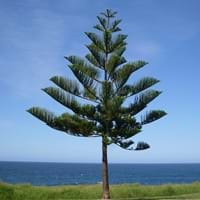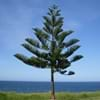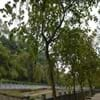Life Span
Perennial
Perennial
Type
Tree
Bulb or Corm or Tuber
Origin
Australia
Mediterranean, Turkey
Types
not available
Not Available
Habitat
Subtropical forests
meadows, Terrestrial
USDA Hardiness Zone
9-11
3-9
Sunset Zone
H1, H2, 17, 21, 22, 23, 24
21,22
Habit
Pyramidal
Clump-Forming
Flower Color
Green
White, Blue, Pink, Violet
Flower Color Modifier
Bicolor
Bicolor
Fruit Color
Green
Not Available
Leaf Color in Spring
Dark Green
Green
Leaf Color in Summer
Dark Green
Light Green
Leaf Color in Fall
Dark Green
Several shades of Green
Leaf Color in Winter
Dark Green
Light Green
Leaf Shape
Needle like
Long Linear
Plant Season
Spring, Summer, Fall, Winter
Spring, Winter
Sunlight
Full Sun, Partial Sun, Partial shade
Full Sun, Partial Sun
Type of Soil
Loam, Sand
Loam
The pH of Soil
Acidic, Neutral, Alkaline
Acidic, Neutral, Alkaline
Soil Drainage
Well drained
Well drained
Bloom Time
Spring
Early Spring, Late Winter
Tolerances
Drought, Salt, Soil Compaction
Drought
Where to Plant?
Ground
Container, Ground, Pot
How to Plant?
Tip cutting
From bulbs, Seedlings
Plant Maintenance
Medium
Medium
Watering Requirements
Allow to dry out slightly between watering
Average Water Needs, Do Not over Water, Do not water frequently, Keep the ground moist but not water-logged, Never Over-water
In Summer
Lots of watering
Lots of watering
In Spring
Moderate
Moderate
In Winter
Average Water
Average Water
Soil pH
Acidic, Neutral, Alkaline
Acidic, Neutral, Alkaline
Soil Type
Loam, Sand
Loam
Soil Drainage Capacity
Well drained
Well drained
Sun Exposure
Full Sun, Partial Sun, Partial shade
Full Sun, Partial Sun
Pruning
Prune if you want to improve plant shape, Remove damaged leaves
Remove damaged leaves, Remove dead branches, Remove dead leaves
Fertilizers
All-Purpose Liquid Fertilizer, fertilize every 2-3 weeks while growing
All-Purpose Liquid Fertilizer
Pests and Diseases
Anthracnose, Branch Droop, Root rot, Yellow Leaves
Red blotch
Plant Tolerance
Drought
Drought
Flowers
Insignificant
Showy
Flower Petal Number
Not Available
Single
Foliage Texture
Fine
Fine
Foliage Sheen
Glossy
Matte
Attracts
Not Available
Bees, Flying insects
Allergy
Not Available
Skin rash
Aesthetic Uses
Showy Purposes, Used as Christmas tree
Beautification, Bouquets, Ground Cover, Showy Purposes
Beauty Benefits
No Beauty Benefits
Not Available
Environmental Uses
Shelter for wildlife, Windbreak
Air purification
Medicinal Uses
Not Available
No Medicinal Use
Part of Plant Used
Whole plant, Wood
Flowers
Other Uses
Used in Furniture
Decoration Purposes, Showy Purposes, Used as Ornamental plant
Used As Indoor Plant
Yes
Yes
Used As Outdoor Plant
Yes
Yes
Garden Design
Container, Feature Plant, Houseplant, Screening / Wind Break, Shade Trees, Street Trees, Tropical
Alpine, Container, Foundation, Lawns and Turf, Mixed Border, Rock Garden / Wall, Wildflower
Botanical Name
ARAUCARIA heterophylla
CHIONODOXA
Common Name
Norfolk Island Pine
Chionodoxa, Glory-of-the-Snow
In Hindi
नोरफोक द्वीप पाइन
Chionodoxa
In German
Norfolk-Insel Pine
Chionodoxa
In French
Norfolk Île Pine
Chionodoxa
In Spanish
Norfolk Pine Island
Chionodoxa
In Greek
Νησί Νόρφολκ Pine
Chionodoxa
In Portuguese
Ilha Norfolk Pine
Chionodoxa
In Polish
Norfolk Pine
Chionodoxa
In Latin
Insula Norfolk Pinus
Chionodoxa
Phylum
Coniferophyta
Platyhelminthes
Family
Araucariaceae
Liliaceae
Genus
Araucaria
Chionodoxa
Clade
Not Available
Angiosperms, Monocots
Tribe
Not Available
Not Available
Subfamily
Not Available
Not Available
Season and Care of Norfolk Island Pine and Chionodoxa
Season and care of Norfolk Island Pine and Chionodoxa is important to know. While considering everything about Norfolk Island Pine and Chionodoxa Care, growing season is an essential factor. Norfolk Island Pine season is Spring, Summer, Fall and Winter and Chionodoxa season is Spring, Summer, Fall and Winter. The type of soil for Norfolk Island Pine is Loam, Sand and for Chionodoxa is Loam while the PH of soil for Norfolk Island Pine is Acidic, Neutral, Alkaline and for Chionodoxa is Acidic, Neutral, Alkaline.
Norfolk Island Pine and Chionodoxa Physical Information
Norfolk Island Pine and Chionodoxa physical information is very important for comparison. Norfolk Island Pine height is 2,440.00 cm and width 460.00 cm whereas Chionodoxa height is 10.20 cm and width 5.10 cm. The color specification of Norfolk Island Pine and Chionodoxa are as follows:
Norfolk Island Pine flower color: Green
Norfolk Island Pine leaf color: Dark Green
Chionodoxa flower color: White, Blue, Pink and Violet
- Chionodoxa leaf color: Green
Care of Norfolk Island Pine and Chionodoxa
Care of Norfolk Island Pine and Chionodoxa include pruning, fertilizers, watering etc. Norfolk Island Pine pruning is done Prune if you want to improve plant shape and Remove damaged leaves and Chionodoxa pruning is done Remove damaged leaves, Remove dead branches and Remove dead leaves. In summer Norfolk Island Pine needs Lots of watering and in winter, it needs Average Water. Whereas, in summer Chionodoxa needs Lots of watering and in winter, it needs Average Water.





